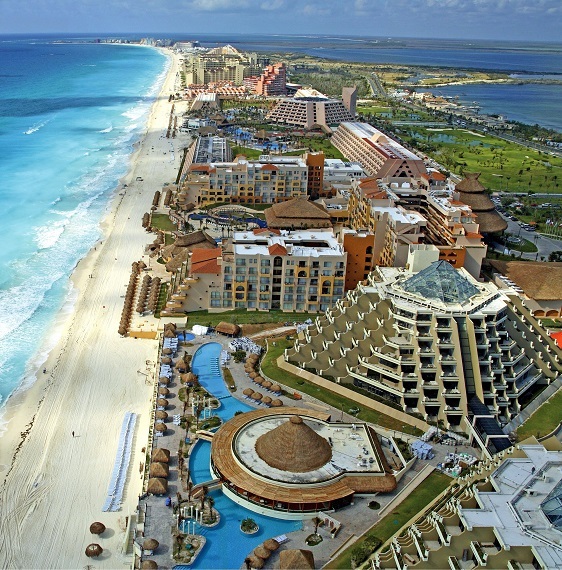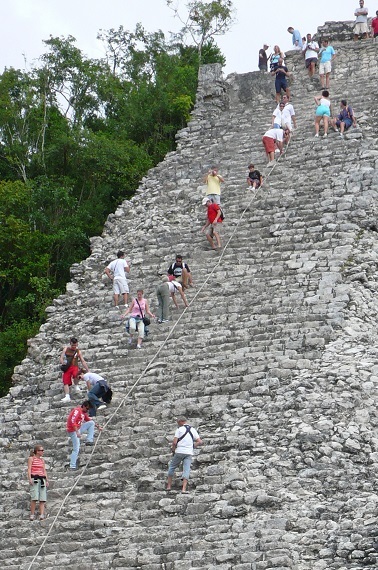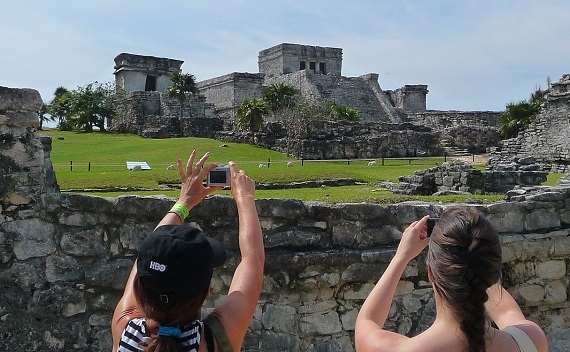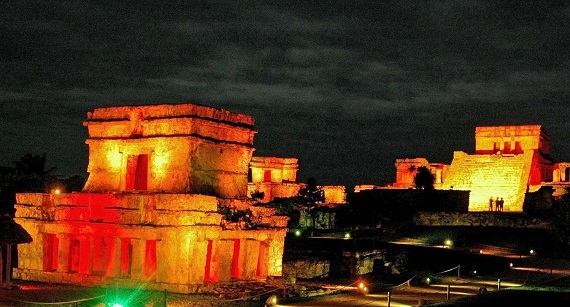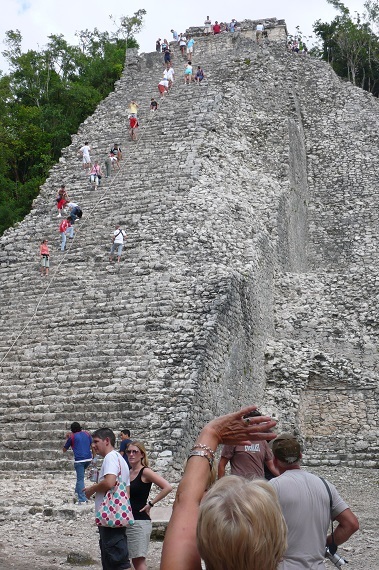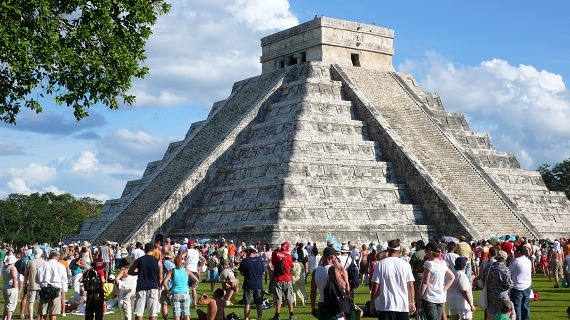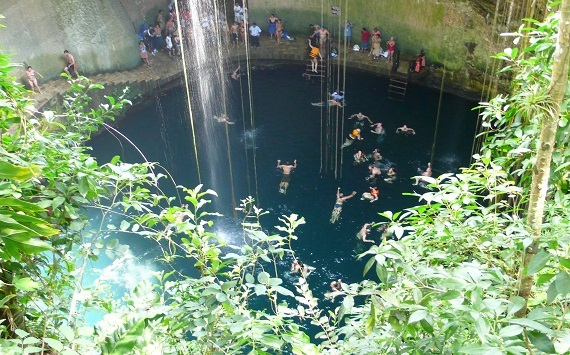It's been another tough day on the beach - sunning, snoozing, splashing around in the azure waters, guzzling cool ones, people watching and the like. Maybe you did some parasailing or rode a banana boat. Perhaps you went out on an early morning fishing trip.
True, having fun in the sun is mainly why visitors fly down to eastern Mexico's beach resorts at Cancun and along the Riviera Maya on the Yucatan Peninsula. But take a few minutes to look over the brochures in your room or spend some time at your hotel's tour desk. You'll find the 100-mile-long Caribbean side of the peninsula offers a whole lot of things you can do in togs other than your swimsuit.
Check out a map of the area and you'll find the peninsula is dotted by the ruins of powerful Maya city-states that ruled the roost around here for a thousand or so years through the mid-15th century. The Maya were keen astronomers and were good at making predictions based on movements and alignments in the heavens. But it's unlikely they could have predicted that a half-millennium later their pyramids, palaces, observatories and ball courts would be invaded by millions of tourists from modern-day palaces lining the powdery beaches.
Tulum (City of the Wall)
Follow the dozens of tour buses heading down the Riviera's highway and chances are you'll end up at the ruins of Tulum, Mexico's third most-visited archaeological site. Perched over the inviting waters of the Caribbean, the city must have lit up like a fireball in the morning when the first rays of the sun began bouncing off its crimson-colored temples, shrines and towers - perhaps explaining why it was originally called Zama, or City of the Dawn.
It must have been a show-stopper at night, too. Had the Spanish sailors who first spotted the city in 1518 sailed by after sundown, they'd have been treated to the sight of its 60-plus buildings shimmering in the glow of torches atop pyramids and ceremonial towers.
Among good spots for snapping images is a magnificent temple called El Castillo (the castle). Also, you'll probably click a lot at the Temple of the Descending God (featuring an upside-down figure of the Maya god of the bees) and a cliffside sanctuary called the Temple of the Winds.
The city was renamed Tulum when a wall was built around its three land sides not protected by the 40-foot-high cliffs on its ocean side. For hundreds of years, Tulum thrived as a trading port for the mega-city of Coba, its beach lined with merchant canoes from as far away as Honduras.
Coba (Waters Stirred by the Winds)
Not all the tour buses end up in the Tulum parking lot. Many get as far as Tulum, then turn inland. About an hour later, the buses pull into the ruins of Coba where as many as 45,000 people once hung their sombreros. Climb the 120 steps of the Nohoch Mul pyramid there and you'll get a dazzling view of this immense city-state, spread out as far as you can see in any direction.
Besides five lakes around the site (hence the "waters" in its name), archaeologists say the city could have had some 20,000 structures including pyramids, palaces, government offices and homes.
Much like the airlines operate "hub" airports from which "spokes" fan out to secondary cities, Coba was for many centuries the hub of the Yucatan. Look close, and you'll see dozens of classic Mayan white-stone sacbe roads crisscrossing the site from other cities across the peninsula.
Chichen Itza (At the Mouth of the Well of the Itza)
Besides running south to Tulum and Coba, tour buses pepper the highways from Cancun and the Riviera for an inland run of a couple of hours to the sprawling ruins of Chichen Itza, Mexico's second most-visited archaeological site (after Tenochtitlan outside Mexico City).
Towering over the city at about the height of a 10-story building is the picture-postcard Temple of Kukulkan. Grounds around the four-sided pyramid, one of the New Seven Wonders of the World, are particularly packed during the two equinoxes when the setting sun creates the shadow of Kukulkan (the Maya god of gods, represented by a feathered serpent) slithering down one of pyramid's staircases to join up with a carved snake head at the bottom.
Make sure to take in the much-photographed Temple of the Warriors, El Caracol (a rounded observatory), the ball court -- where losing teams lost a lot more than the game - and a huge well called a cenote (possibly the "mouth" of earlier rulers of the city, the Itzas). Tour guides tell stories of how maidens weighted down by gold, jade and carved seashells were tossed into the well to please the gods.
Daily tours to these places and other major historical sites are run by dozens of operators in Cancun and along the Riviera. Both resort areas are served by Cancun International Airport.
